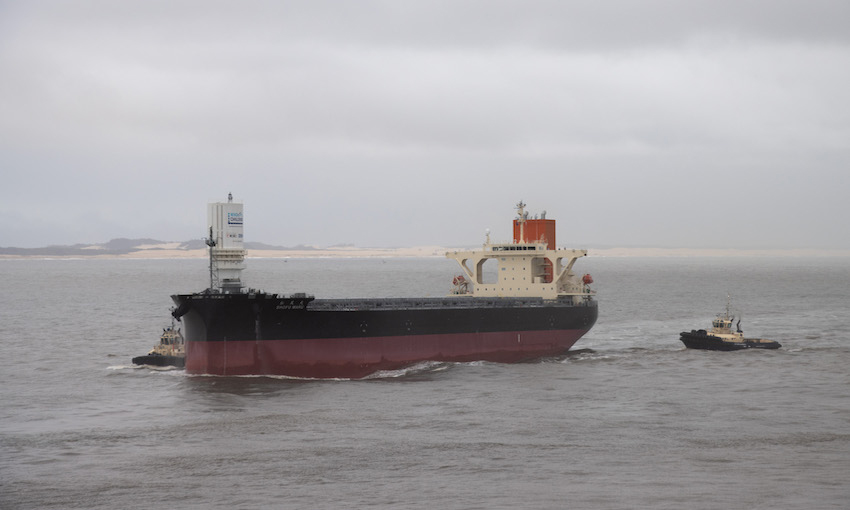PORT of Newcastle welcomed the world’s first ship equipped with a Wind Challenger hard sail on Monday morning.
Bulk carrier Shofu Maru called Newcastle as part of its maiden voyage from Japan, drawing plenty of attention with its futuristic retractable sail system.
A crowd of port community representatives, Mitsui OSK Lines delegates and local media gathered at Nobby’s Lighthouse overlooking the port to watch Shofu Maru’s arrival.
MOL and Oshima Shipbuilding developed the Wind Challenger for the cargo vessel. Some MOL delegates had flown in from Japan for the occasion.
The Wind Challenger hard sail system was designed to help ships harness wind as a sustainable energy source. The sail expands and retracts (vertically) using AI technology to sense the strength and direction of the wind.
MOL expects the Wind Challenger to reduce GHG emissions by around 5% on a voyage from Japan to Australia, compared to a conventional vessel of the same type.
Port Authority of NSW CEO Philip Holliday said the state was delighted to welcome the “beautiful and innovative” vessel to its shores.
“Shofu Maru … will transport coal mainly from Australia, Indonesia and North America as a dedicated vessel for Tohoku Electric Power Co.,” Captain Holliday said.
“With its futuristic looking sail, it converts wind energy directly to a vessel propulsion force, using the wind as clean and unlimited source of energy.”
And Port of Newcastle CEO Craig Carmody congratulated MOL for its role in diversifying the shipping industry.
“Their dedication to reducing fuel emissions through innovation should be applauded and encouraged across industry,” he said.
Captain Vikas Bangia, Newcastle harbour master, travelled to the MOL Group facility in Tokyo with two Newcastle marine pilots to take part in simulation pilotage trials specifically for Shofu Maru.
It is understood pilots will be able to adjust to the vessel and its unique contraption easily, as the sail will likely have minimal impact on navigation when it is lowered.
“Managing port operations to the high standard of efficiency and precision that our roles at the port Authority require, also involves looking to the future at emerging trends, methods and technologies to ensure our ports, logistics, systems and people are prepared for industry changes,” Captain Holliday said.
“As most working industries around the world are transitioning to greener practices, the same can be said for maritime.”
Following the ship’s arrival, a special ceremony was held at the Newcastle Bulk Terminal to offer an even larger crowd a view of the ship at berth.
Nobuo Shiotsu, management executive officer of MOL, said work on the hard sail began in 2009, and the day had been a long time coming.
“At this time, this project was our dream, but today, this is a reality; our dream come true,” he said.
Hideyuki Irisawa, managing director of MOL Shipping (Australia), told DCN the creation of the Wind Challenger is just one part of the company’s decarbonisation goals.
MOL plans to expand the use of its Wind Challenger system. The company announced in August this year its decision to construct a second bulk carrier fitted with the hard sail.
“We are planning to launch the ammonia fuelled vessels and hydrogen fuelled vessels in the future,” Mr Irasawa said.
“We have already planned to deliver an ammonia fuelled bulker in late 2025 and 2026.”
Mr Irasawa said MOL’s relationship with Australia is particularly strong because of the iron ore, energy, natural gas and coal trade.
“Even in MOL, over 1500 vessels come [to Australia] to load cargo … so Australia is a very important country for MOL shipping company,” he said.
“This is the reason why we have confidence in our good relationship with Australia.”

